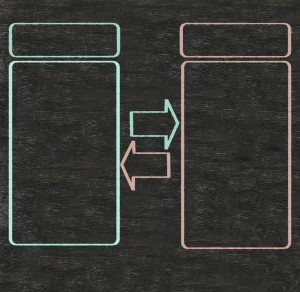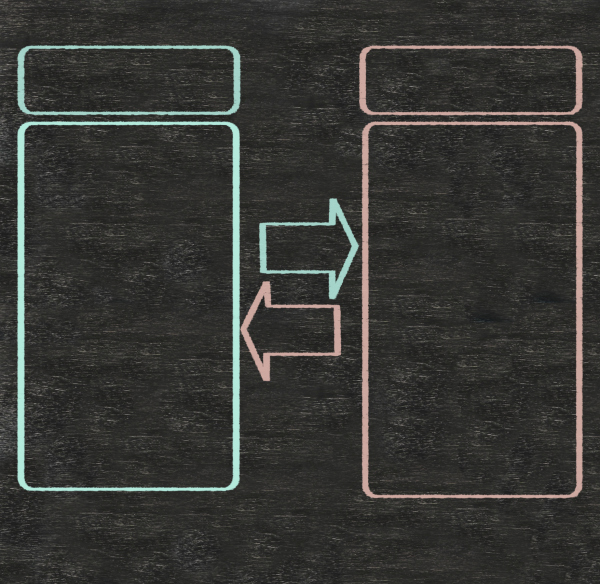 Here are some of the highlights of SearchMetrics 2014 SEO ranking factors study as it relates to content …
Here are some of the highlights of SearchMetrics 2014 SEO ranking factors study as it relates to content …
- There is a measurable correlation between the quality of content and rankings. This is demonstrated by, among others, the analysis of two new features based primarily on word co-occurrence analysis: Proof and Relevant Terms.
- The length of content continues to increase.
- A good internal linking structure is an important factor (emphasis mine), and probably the most underrated SEO measure.
If you have a high bounce-rate, meaning people are entering your website through a specific page and exiting right away without accessing any additional pages, it’s likely because you are not serving up any additional relevant content.
So when a user enters through one of your community landing pages, they should be able to:
- Continue to search additional areas in that community
- Search for homes by property type
- Search for homes by price range
You can make links to these additional searches easily available through your page’s sidebar thereby accomplishing two things:
- Creating a good internal link structure between your community page and additional pages,
- You make it easier for Google to crawl and index those pages as well.
Recommended Reading: How To Create a Community Landing Page That Converts.
Why Internal Links Are Important
If there’s a page on your site that you care a lot about and has a lot of value to you (such as a community landing page, a home valuation page, or an evergreen ebook download landing page), you need to think about how you can explain that value to a search engine.
You want to make sure your page has a good title tag and then you want to make sure that you use the keywords that are in your page title at least three times throughout the page’s content.
From the report:
The internal link structure of a domain is a vital component of domain performance. To distribute link juice optimally, factors such as “number of links” and “link text” are crucial. Not only are the number of links that point to a ranking URL relevant, but the link structure on the URL itself is crucial.
A link should always make sense to both the page and to the expectations of the user within the structure of the page. Broken, irrelevant, and unnecessary links should be removed as a housekeeping priority. Many companies and website operators make the mistake of focusing on external links rather than trying to optimize the user experience and internal link flow.
Internal links help Google to crawl your site
Creating a good internal links is a great way to help Googlebot crawl your website. Furthermore, the descriptive anchor text that you use will help search engines better understand your content.
So if you have a great neighborhood landing page, make it easier for site visitors to search for additional relevant content directly off of that page and make it easier for Google to crawl and index those additional relevant pages as well.
Internal links make it easier for site visitors to discover relevant content
Let’s use real estate as an example … If a user comes to your website and clicks on your community page to learn more about living in Laguna Niguel, then it makes sense that they’ll want to read additional related content about Laguna Niguel.
You may have written about:
- Things to do in Laguna Niguel,
- Best restaurants and places to shop in Laguna Niguel,
- What the market currently looks like through your recent local market reports,
So you’ll want to encourage readers to read these articles that you’ve spent time on by linking to them from your page and vice versa. When you write a post about a specific local community always link back to your community page so that visitors can read and engage more.
Internal links reduce bounce rates
When someone visits your website and reads an article, ideally, you want them to stick around and read some more and eventually convert.
You can do this by:
- Linking to your most popular posts on your blog’s sidebar,
- Add links to your top landing pages within the body of your blog posts. Only do this if the content is directly related to the article that you’ve written.
The more you serve up relevant content the more pages-per-visit a site visitor will access before exiting your website.
Website Structure and Architecture
A URL structure for your real estate community pages should look something like this:
yoursite.com/communities
yoursite.com/communities/laguna-niguel
This will help both site visitors and search engines make logical connections between all of the various different pages on your website.
The thing to remember here is that search engines find pages by following links. So a page that isn’t linked internally wno’t be indexed in search results.
You should look for opportunities to link to your top landing pages every time you write a new blog post. For example, let’s say you write a local market report for Laguna Niguel. In your blog post you would include:
- What the current real estate market looks like in Laguna Niguel (are we in a buyers or sellers market),
- What’s the average days-on-market (D.O.M.) for new listings?
- What’s the average sale price?
In your closing paragraph you would link to your Laguna Niguel community landing page like this …
Learn more about living in Laguna Niguel.
Start Linking Up Your Content
So, time for some homework …
This week I’d like you to take a look at your community landing pages and some of the other important pages on your site. Are you making it easy for site visitors to access additional relevant content? Are you making it easy for Google to crawl and index all of that additional content?
Time to start linking up some of your content throughout the various pages of your site so that users can access more pages-per-visit and stay engaged longer.





